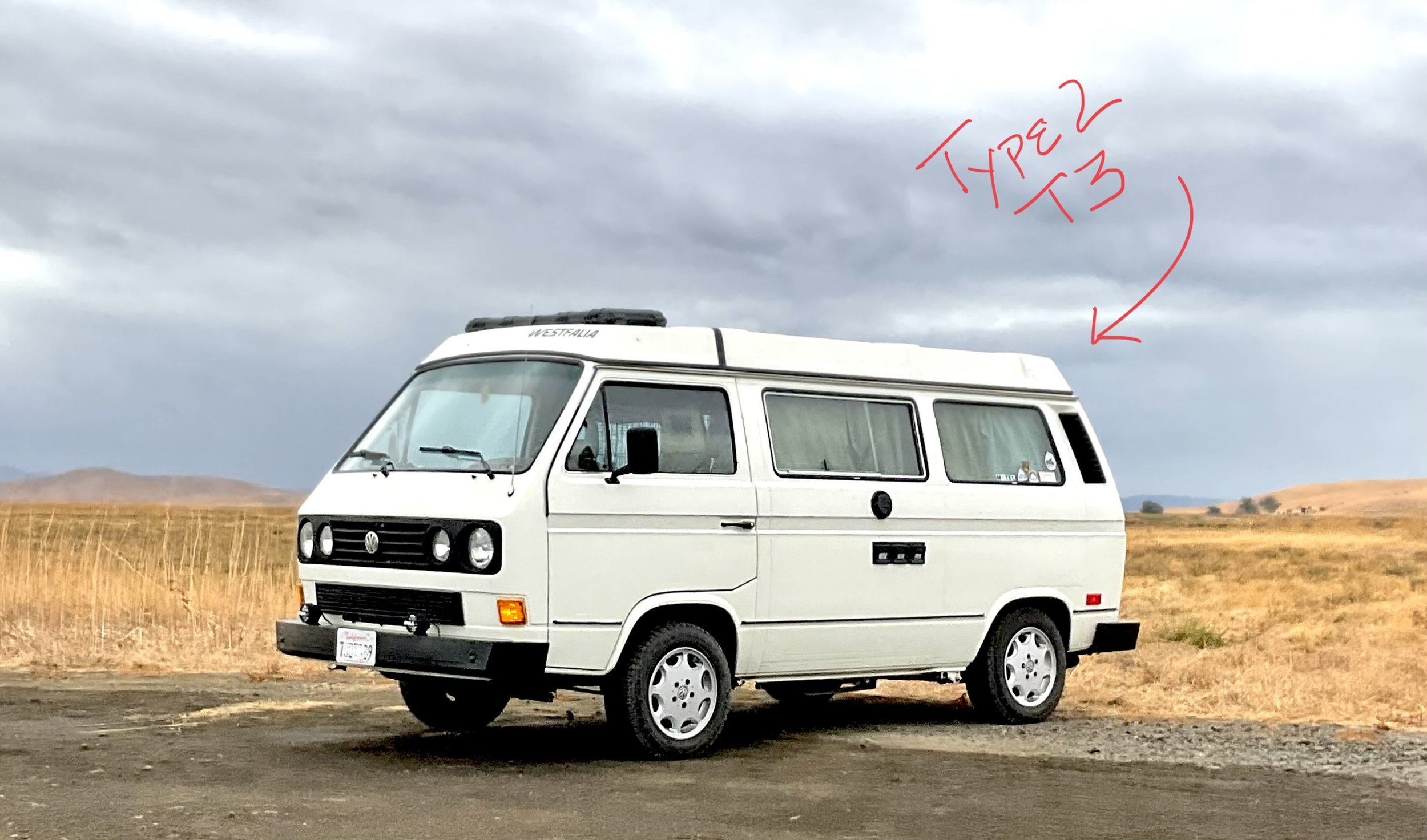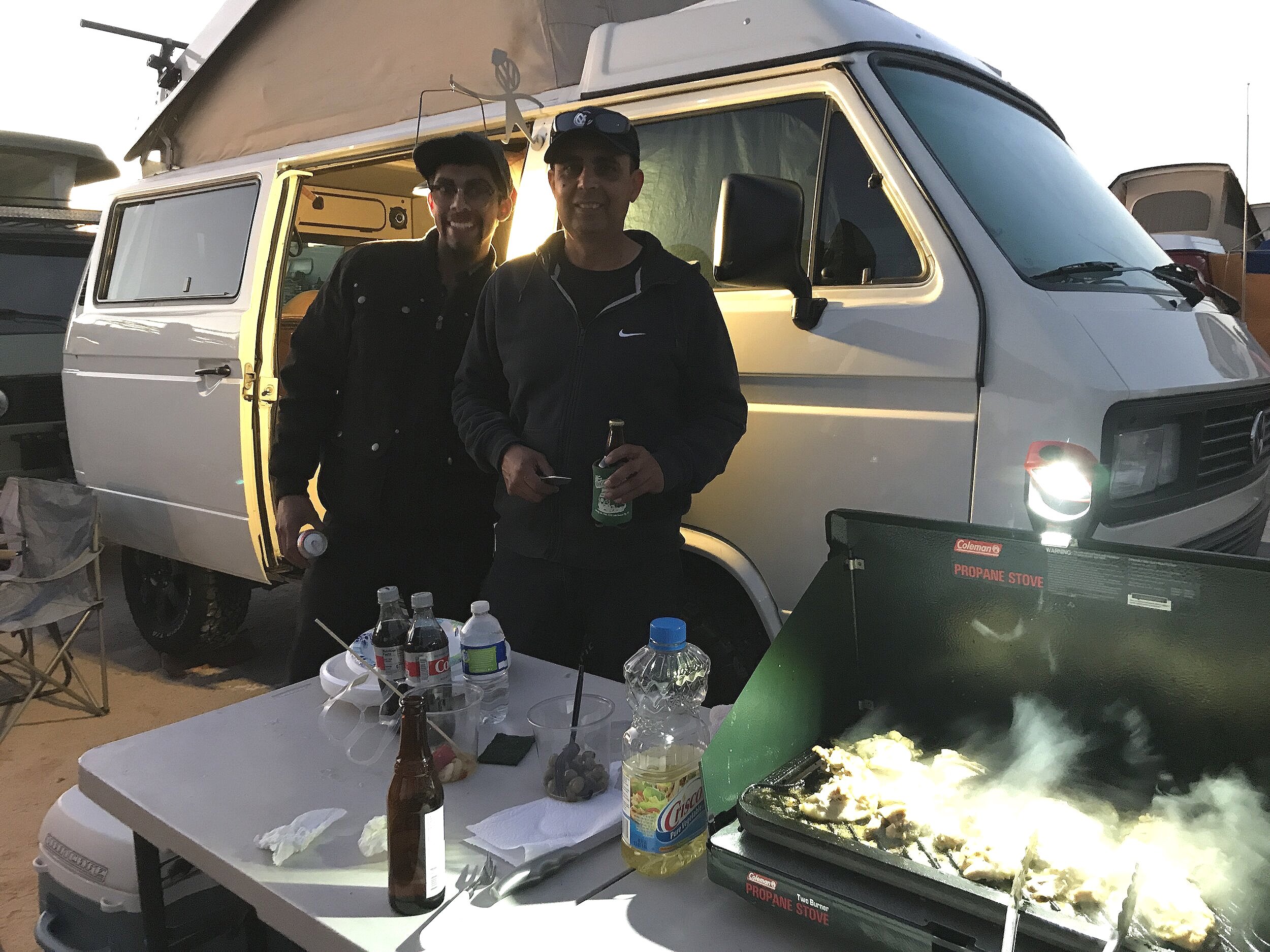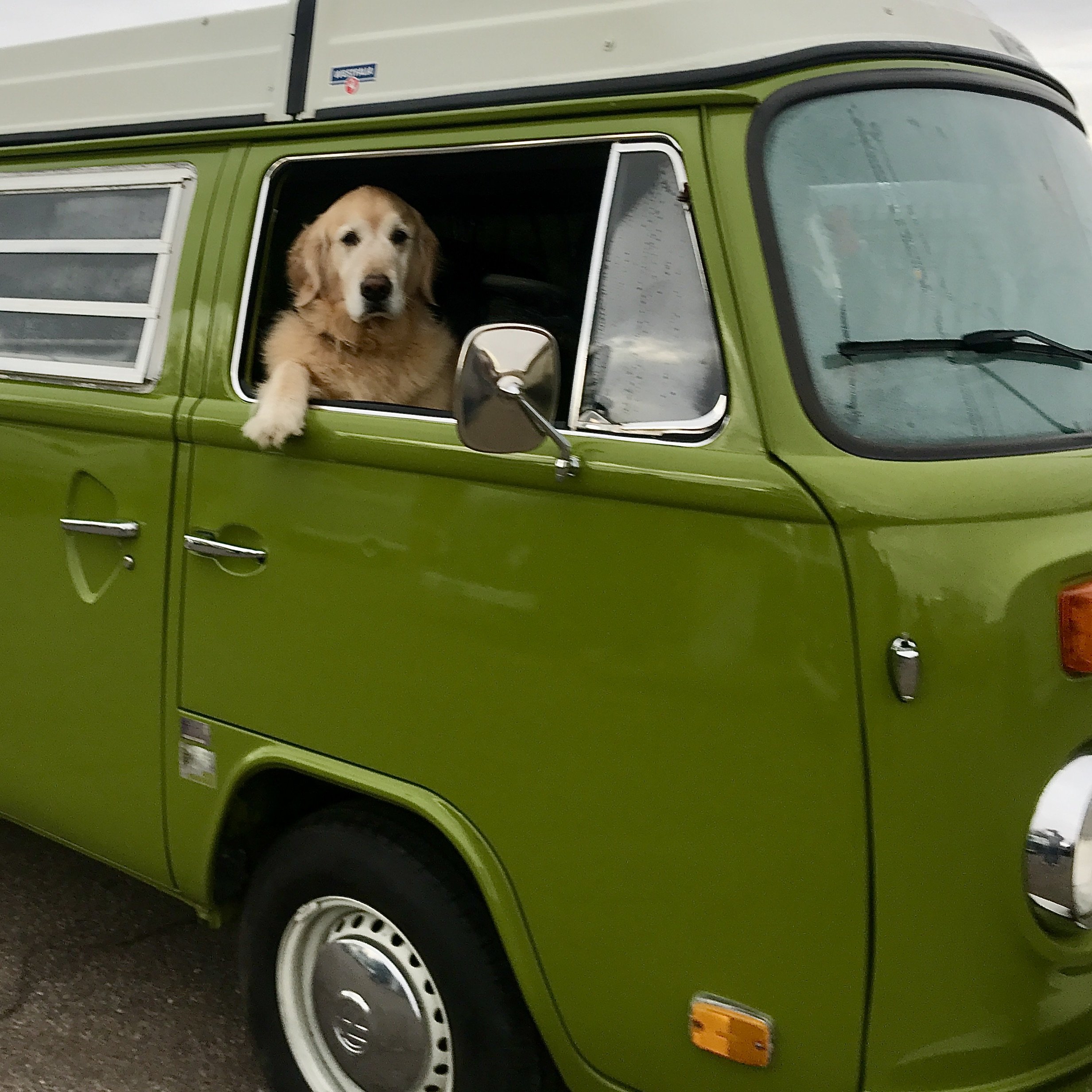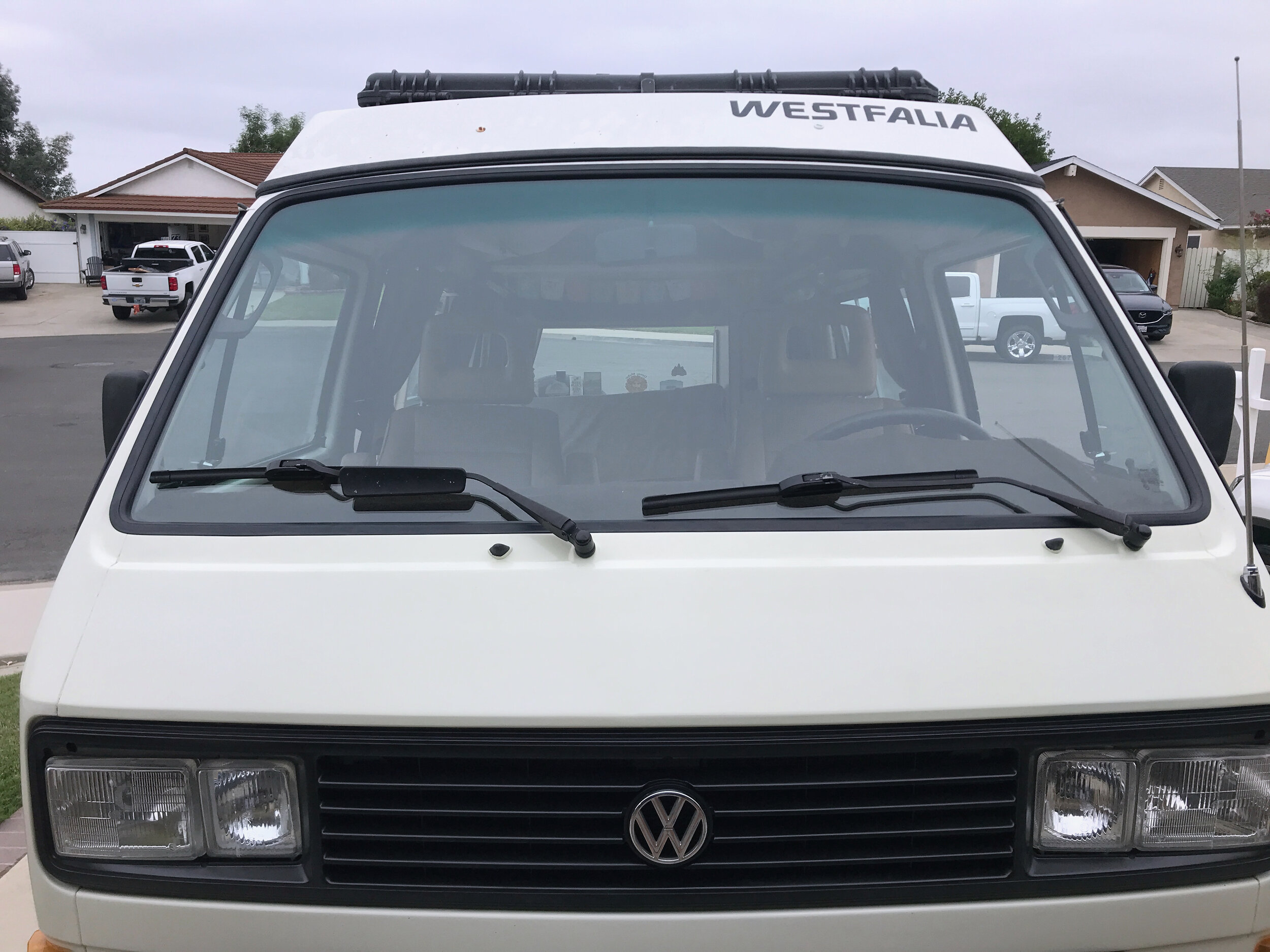Exploring the VW Vanagon
It Made Hagerty’s Watch List
What’s Next?
Updated in 2024: In 2023 a 2-wheel drive Vanagon camper in the U.S. with 35,000 miles sold for a whopping $62,000. That’s double what these particular models were fetching before the sale. The low miles and pristine condition make a lot of difference, however, be very careful about “mileage” and understand how it can be manipulated easily. More good news in 2024: A Vanagon tintop with a Porsche engine made its way to Bring A Trailer with a high bid of $33,000. That’s so far from their regular resale, but this particular 1981 with an air-cooled 3.2L flat-six and Getrag G50 5-speed is an amazing sight to behold. When last reported it had nearly 15,000 views and more than 1,000 watchers.
Much of this commentary deals with the Value of the Type 2 T3 (1979 to ‘91). Note: countries outside the U.S. might see variances in pricing.
Called the “wedge” by purists, the Type 2 T3 in America (T25 in UK) is in demand. That demand for Vanagon increases in early Spring and settles in late Fall. Be cautious the classic/investment car market is unstable. Values rise and fall often for no logical reason. Type 2 T3 Vanagon indeed made the Hagerty Watch List, and that’s a big deal. Hagerty typically features vehicles on the rise, and Vanagon is there. But for how long? Read more below.
Kick off the shoes… this might take a while.
You aren’t buying a Type 2 T3 Vanagon (T25 in UK) to hit it rich, are you? Of course not. But statistics show values are climbing in the U.S. and that’s been a trend for the past decade or so.
No one knows how far Vanagon will rise in value, or if the trend will slow to a crawl. But for fun let’s talk about it. It does follow the rise of the Bay Windows, but that might be meaningless.
I field plenty of questions about my 1986 Vanagon Westfalia, the camper edition of the badge.
“Is it for sale?” That’s the question I get. People wave, they cheer, and they smile as my Vanagon passes by. But why? Does a Tesla bring that much attention?
Total strangers tuck handwritten notes on parked Vanagons (see photo of mine). It happens across the country, according to social media groups. It happened to me one morning when I was parked at a restaurant. And, they knock on my door when they see the Vanagon in the driveway. A bit unnerving, but flattering. And it’s not just Baby Boomers, the Millennial generation is just as curious.
Let’s explore why it is viewed with such fond regard; whereas another vehicle of the same era is headed for the junkyard.
There are particular models of vehicles that became instant celebrities straight from the factory. These are often styled/conceived by an accomplished automotive design group (or designer), say Pininfarina for instance. The Carrol Shelby Cobra is another.
The Vanagon is a distant sibling of the first VW Microbus, designed by Ben Pon, a Dutch VW Importer back in the late ‘40s and ‘50s. Then the design group Westfalia of Germany put their own spin on Pon’s Microbus and made major changes for camping enthusiasts. Vangon is the third incarnation of the early VW “Transporter.”
The cultural movement from the ‘60s really kicked off the popularity of anything associated with the early Microbus, and though the ‘79 to ‘91 Vanagon is far removed from Pon’s original platform, it is still connected by VW DNA in the eyes of many enthusiasts. But for years air-cooled enthusiasts have ruled out the water-cooled Vanagons. Although that attitude could be changing.
Our childhood memories drive adult purchases. That includes buying a classic vehicle that you remember from the past. That’s what’s happening today with Type 2 T3 Vanagon.
Right now the Type 2 T3 Vanagon is coming of age. The Type 2 T3 manufactured in Hannover, Germany from 1979 until 1991 is the most attainable platform in the U.S.
I recommend taking a look at this historic documentary on the early air-cooled. It will give you an idea of the real history of the Type 2 T3 Vanagon. It’s mostly about the early Buses and Bay Windows, but the details of how and why VW decided to go with the Type 2 T3 is what I think is fascinating.
DREAM VEHICLES: What makes Vanagon unique is that younger people want to drive them.
I can’t explain it. I’d like to say it is Vanagon’s ability to travel the backroads to camp and enjoy nature. Freedom! No other small van offers that.
Love Connection
It is reasonable to suggest that all dream vehicles connect (or are associated) with some part of us, often on a deep emotional level many years after the last one rolled off the production floor. One post I read on Facebook was from a person who said, she was “first attracted to the Type 2 T3" because she recalled sleeping in the upper bunk and making smores by the campfire as a child, thanks to her dad’s interest in camping with Vanagons.
Dream vehicles that see high resale values also tend to have big cult followings. Vanagon has that edge over other vehicles. The VW enthusiast market is enormous.
Today even a rusted shell of an air-cooled VW split window is worth big dollars.
Very few modern vehicles retain decent resale because their styling was pedestrian (boring). Born out of cost-cutting rather than imagination.
Where does Type 2 T3 Vanagon fit into all of this?
It is a Swiss Army knife.
The Vanagon campers are incredibly unique in that regard. And that is appealing to adventurous demographics. It can do many things other than just carry people, or products.
One of the most popular articles on the subject can be found at GoWesty. Check it out on this link: Bus, Vanagon, Eurovan.
A solid video presentation of the Vanagon is by the YouTube channel GarageKing. Please watch it because it explains much more about the badge.
VW enthusiasts don’t just buy Vanagons and garage them. Enthusiasts tinker with them in every way possible. Vanagons offer more possibilities than any other vehicle in the world… this is so true with the camper Westfalia. The market for Vanagon is not just American, it is worldwide. Another ingredient that is necessary to eventually be a good investment. Although not always as I’ll explain later.
Let’s continue... Don’t confuse the Type 2 T3 Vanagon with the Eurovan that launched in ‘92. They are completely different vehicles.
The Vanagon saw various forms of powertrains from 1979-'91, and then cosmetic changes happened like going from round to square headlights. Lots of little things.
Let’s focus on the VW Vanagon made from 1986-'91 just to make it simple, which for some enthusiasts were the best years because of their larger 2.1 engine, better cooling system, and electronics. With that said, earlier Vanagons have just as much selling power if you watch The Samba and other classifieds. So don’t get stuck on years.
Camper vs. Tintop
Something to consider when buying a Vanagon, there are two basic styles. The Westfalia and Tintop. Westys are camping ready with a stove, frig, pop-top roof, sink, and swivel seats up front. Tintop Vanagons are strictly Buses with no amenities, hence the name Tintop. There are also several editions of Vanagons like Wolfsburg, Carat, and Syncro.
Vanagon was the last rear-engined VW. If you want to learn more about particular years of Vanagons check out Vanagons USA at this link.
Values and Why
Here's where it gets cloudy, so bear with me as I generalize.
First, let me begin with value because that’s what many people seem to want to know. But with it understand that values rise and fall like a schooner sailing the Cape of Good Hope.
With all things considered and in a great market a Type 2 T3 Vanagon Westfalia in the U.S. might sell for $15,000 to $35,000. It’s never going to rise in value like a Pantera will. The audience who appreciates them is much too small. But resale values are slowly trending upward. The best restorations of a water-cooled Type 2 T3 Syncro (four-wheel drive) camper edition have sold for $50,000 to $90,000. Tintops might bring $10,000, or much more if they are four-wheel drive.
Record-Setting Resale
Many things, including condition, miles, and factory options affect resale value. A perfectly running, beautiful-bodied Vanagon will have no problem seeing a high-resale figure. On the other hand, a non-operational, badly rusted Vanagon can sell for under $3,000. With that in mind, in 2023 a two-wheel drive white 1990 Vanagon Westfalia with 35,000 miles on the odometer sold for a whopping $62,000. And, it had the original 2.1 engine! It shocked the Vanagon community, but it proves that if a buyer really wants a particular vehicle, he or she will pay anything for it.
That’s double what sellers were seeing before the sale. Why did it double in resale? I suspect the low miles and pristine condition were major factors. However, mileage on the odometer can be easily manipulated by simply unplugging the cable from the back of the odometer, or at the driver’s wheel. Leave it off for several years and there will be zero recorded miles. I’m not implying that’s what happened, but anything is possible in the used car world.
With that said, there are always CarFax and DMV reports that show mileage, although those too don’t tell the whole truth either. Miles on the chassis are just a piece of the overall value, the drivetrain is the most important factor in my opinion. High miles on the chassis, but very low miles on the transmission and engine is the optimum vehicle for a buyer or seller.
Research shows that what drives the price market is that the supply that was once huge is shrinking. Limit numbers tend to spike prices.
The Good, Bad, and Ugly
Rising values are one reason the market is filled with “flippers.”
Seam rust, leaking heads, mold, and cooling issues are just a few things that shady sellers like to skim over when they see a buyer who is nostalgic. Flippers take beaten Vanagons and cosmetically improve them for quick cash returns.
There is a small percentage of people that claim to be enthusiasts and really only see dollar signs and don't want to discuss the many things that can go wrong with a Vanagon. And if you are emotionally wrapped up in the purchase you might not want to know either.
Don’t place too much emphasis on an absolute resale value of the Vanagon. They will ultimately fetch whatever the market can bring, and no more or less.
Buyers will always try to buy low. Sellers tend to overvalue the Vanagon. The true price is somewhere in the middle.
Vanagons take a lot of care and regular maintenance. Living with a Vanagon means learning to wrench, or at least learning more about how things are repaired. Finding a decent mechanic takes lots of research. Once you do find a good Vanagon shop you’ll never leave.
The good news is there is a super-active community of people on Facebook and Instagram that love to talk about Vanagon and there’s a good-sized aftermarket of NOS (new old stock) and remanufactured products available.
There are apps like VanAlert that can give you locations to qualified mechanics, and will even send out an alert to members should your Vanagon get stolen. (Yes, Vanagons are a hot commodity).
GoWesty.com is one of the leading suppliers of T3 parts and accessories, in fact, they even produce a series of upgraded engines for these vans. If you are serious about Vanagons read all the articles that address the things I'm saying. There are a half-dozen other suppliers like Bus Lab, Small Car, Vanagain.com, and Van Cafe.
Vanagons don't run on good vibes!
They require constant attention. But when they are dialed in, you can’t find a better vehicle to explore the world. Are they reliable? Yes, they can be. But they are 30 years old, or older… in car years that’s ancient.
Don’t buy one for what it might be worth down the road. Vanagons are meant to be driven, not stored away in some barn in Ohio. You can easily invest more money than the value of the vehicle. With that said, you’ll also get the privilege of driving and camping in it.
Love it and it will bring you enormous pleasure. It isn’t necessarily going to reap huge ROIs, but the time you’ll have in it will be worth the effort you put into keeping it on the road.
For further reading on Vanagon lifestyles I recommend: Campwestfalia
For technical data on Vanagons I recommend: https://www.vanagons.org

































